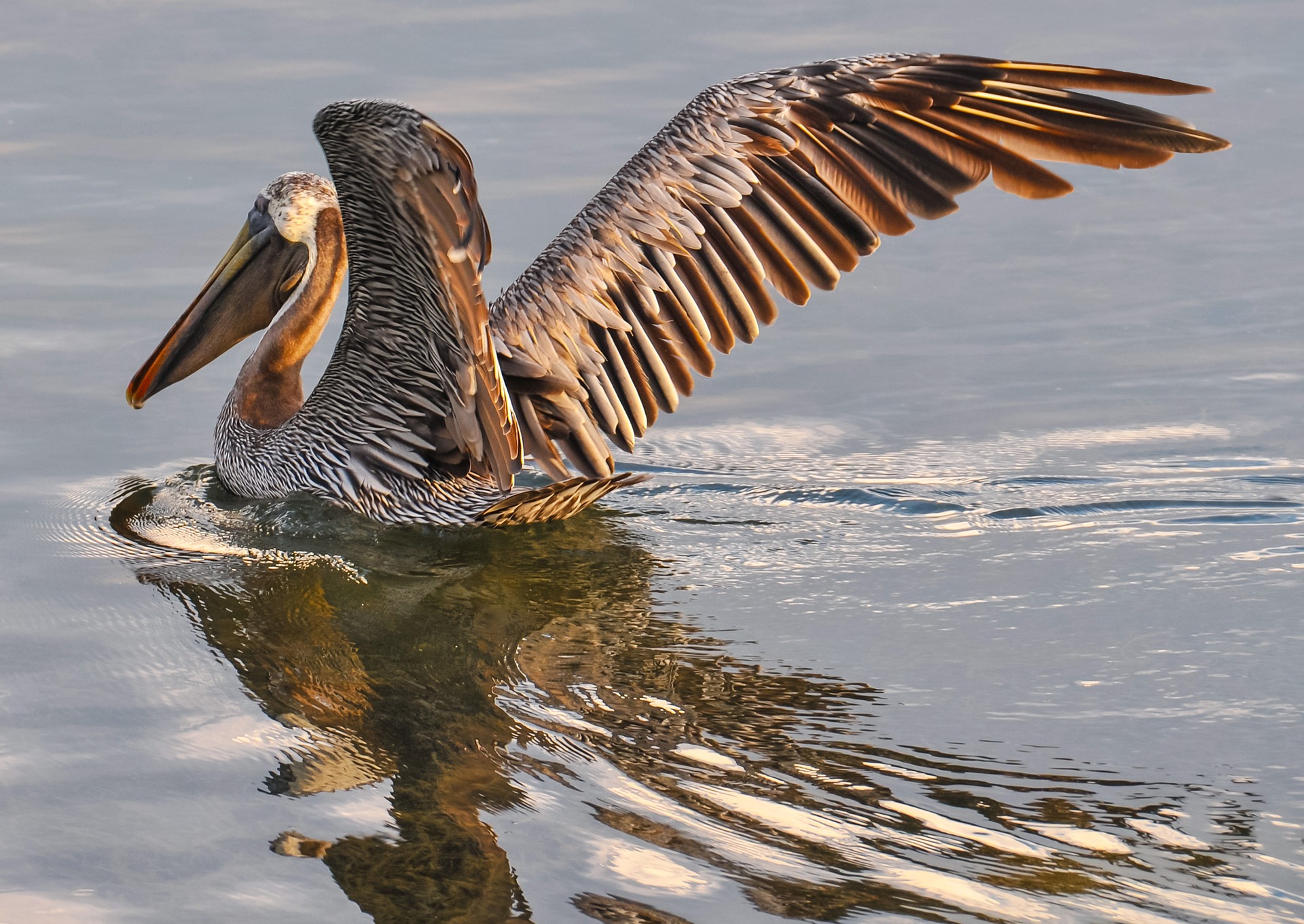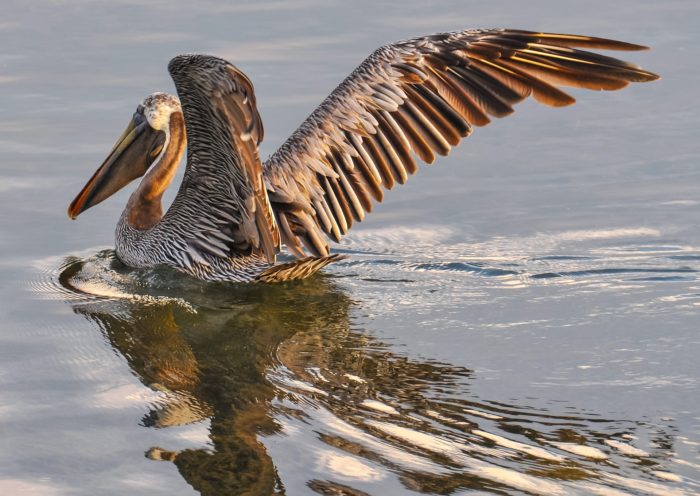
Sea Wonder: Brown Pelican

Photo credit: Susan Frazier
The brown pelican is one of the more well-known seabirds in the world, and it can be found across the National Marine Sanctuary System.
Appearance
The brown pelican’s coloration isn’t the only thing that makes it unique. Weighing in around ten pounds with a six-foot wingspan wingspan when fully grown, this is the smallest of all pelican species in the world. Their adult coloration is primarily chestnut-colored feathers with tufts of white feathers along the entire neck and top of the head, while juveniles have brown heads and bodies with white undertones. They have flat, gray bills that range in length from nine to 15 inches, and a skin pouch below the bill that expands when foraging. Their legs are darker, ranging in color from gray to black, which helps in blending in to the water around them.
Habitat
Brown pelicans live up and down both American coasts, meaning we can see them in or near Florida Keys, Gray’s Reef, Stellwagen Bank, Monterey Bay, Channel Islands, Olympic Coast, and the recently-designated Mallows Bay Potomac National Marine Sanctuaries. They primarily live nearshore, resting and nesting near salt bays, the ocean, cliffs and beaches. Sometimes, we can even see them perching on human-made structures like buoys, docks, and posts.
Brown pelicans are capable of migrations, but not all populations do.
Diet & Life History
Brown pelicans feed primarily on fish like mackerel, herring, and anchovies, and forage by flying over the water at a low height, and diving head-first into the water when they see a school of fish near the surface, making a huge splash and using the expandable pouch below their beach to scoop up and hold their catch. This is the only species of pelican to dive head-first into the water, and their pouches can hold up to three times more food than their stomachs. Once they’ve made their catch, they push the water out the sides of their mouth and push the fish toward the back of the throat. Sometimes other birds will try to steal fish directly from a pelican’s mouth if it has so many that some are hanging out of the mouth, or due to the slow speed at which pelicans move and swallow their prey.
In addition to flying, pelicans can swim to get around. They’re known to be very strong swimmers and can reach top speeds of nearly three miles per hour! Young pelicans seem to be strong swimmers before they even know how to fly.
These birds generally nest in colonies and mate annually. Individuals between three and five years old are considered sexually mature adults. Pairs of pelicans are monogamous for the season, and the male’s role is to bring nesting materials to the female, who builds the nest. Nests can be around 30 inches across and nine inches high, with the male bringing new materials to add to the nest throughout incubation. Fun fact: brown pelicans rarely vocalize, but will let out low grunts during mating and nesting season.
Usually between March and May, females will lay between one and three eggs that they incubate with their feet for about a month before hatching. Brown pelicans are born featherless, without sight, and rely on their parents for the first two or three months while they develop their strength and senses needed to survive on their own. Fledgling first flights generally occur at around 75 days of age, and once out of the nest are considered independent juveniles. Juveniles will travel with the group and learn migration paths and foraging strategies for about a year before moving on to new groups into adulthood.
Threats & Conservation
Brown pelicans were listed as endangered in the 1970s and 1980s after a pesticide called DDT. Pelicans were regularly exposed to DDT due to their habitat’s proximity to coastal human communities, resulting in eggs with very thin shells, which broke during nesting and incubation and resulted in decreases in the number of surviving offspring. In 1972, after much public outcry and advocacy, DDT was banned by the government and brown pelican populations were able to recover over time. In the late 2000s, brown pelicans were removed from the federal Endangered Species List, though some state and local agencies afford the species protections to this day.
While their populations are generally recovered and healthy, brown pelicans are still affected by the actions of humans. Overfishing, coastal development, marine pollution, and habitat degradation are only some of the activities that pose a threat to brown pelican populations all over the country. We can all help preserve this species by keeping their habitat in-tact and clean, choosing to eat sustainable seafood, experiencing them first-hand through wildlife viewing, and asking for policies that would have positive effects on brown pelicans, whether at the local, state, or federal level.
